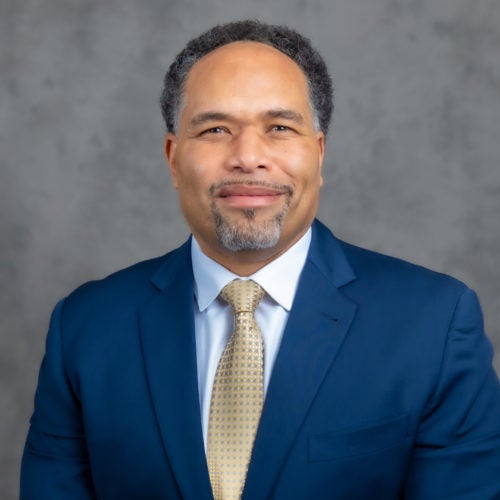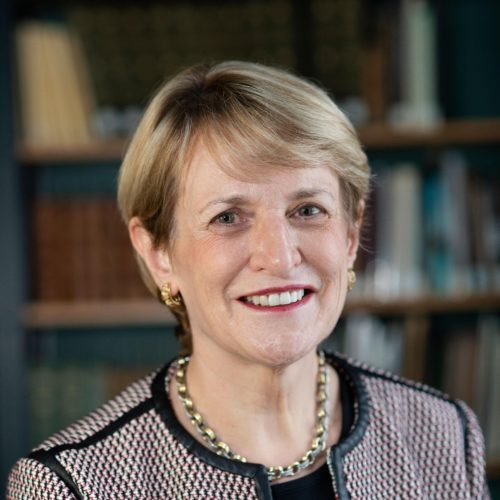Presidential Perspectives: Juan Sanchez Muñoz, University of California-Merced
March 31, 2021
Reading Time: 3 minutes

Prioritizing Equity Amid the Pandemic
We have found that strong, consistent and frequent statements by leadership on various aspects of our commitment to diversity and equity cannot be discounted; they set the agenda for campus discussions around inclusiveness, civility and planning priorities.
Q: What are the most impactful actions that you have adopted to address the needs of students from lower-income backgrounds and communities of color amid the pandemic? Of these actions, are there any your institution hopes to continue post-pandemic?
With an overwhelmingly majority-minority student body, the University of California, Merced, has been extraordinarily affected by the pandemic. More than 73% of our students are the first in their family to attend college and 63% are Pell-eligible. We enroll more than 600 undocumented students — the highest percentage in the UC system. And 54.7, 17% and 4.3% of our students are from Hispanic, Asian, and Black backgrounds respectively. Thus, we have become adept at providing an array of student support services, delivered by a caring faculty and staff.
As most students returned home in spring 2020, we knew there would be those for whom our campus was the best or only option to continue their academic journeys — often because of lack of broadband access in central California and in lower socioeconomic areas generally. We designed a very small, selective residential program focused on maintaining a safe and supportive environment. For the many students whose families were economically displaced by the pandemic, we reconsidered financial aid in two ways: using federal CARES Act funding to repackage aid for those in need and increasing awards to account for technology purchases. We supplemented this with philanthropic support for loaner technology, including wi-fi hot spots. Assuming there is a fully “post-pandemic” world, the latter two practices will certainly maintain their significance even as we partner with other institutions to increase broadband access in the Central Valley.
Q: In an increasingly polarized political climate, how have you leveraged your role as president to promote an inclusive campus climate and encourage dialogue among staff, faculty, and a diverse student body?
Our Office of Equity, Diversity and Inclusion was less than a year old and greatly under-resourced when I assumed campus leadership last July. Since then, I have added a deputy chief diversity officer, a policy analyst, and other staff, as well as programmatic funding, to enhance the office’s ability to connect with both our campus and external communities.
In part as a response to the pandemic, we created the People First Workgroup under the direction of our chief diversity officer to ensure our decision-making processes during (and beyond) the current crisis prioritize faculty and staff concerns and needs. We have also fostered Faculty and Staff of Color affinity groups as well as the Language Accessibility Committee, which works to ensure critical campus messaging and conversations are accessible to our significant Spanish- and Hmong-speaking populations. And we created and resourced the Valuing Black Lives Task Force, which has a charge to focus on campus policing, diversification of our faculty and staff and increasing financial support for undergraduate and graduate students of color.
Finally, we have found that strong, consistent and frequent statements by leadership on various aspects of our commitment to diversity and equity cannot be discounted; they set the agenda for campus discussions around inclusiveness, civility and planning priorities.
Q: Reports of drops in lower-income student applications are beginning to emerge, likely linked to the disproportionate impact the pandemic is having on lower-income communities and communities of color. How is your institution thinking about addressing this challenge now and over the long-term?
UC admissions policy has already paved the way by making standardized testing optional and reconsidering the value and viability of said tests in the future; this opens up the dream of UC admission to those previously deterred.
At UC Merced, our focus on strong, effective student support is communicated early and often to prospective students and applicants, as is the demographic profile of our student population — which reflects the truth that UC Merced is a place where diverse students have found and built a supportive community. We have outreach programs for Hispanic, Black and Native populations in California, and proudly recognize our status as a Hispanic Serving Institution. And we have a tradition of offering creative financial aid awards that make UC Merced not merely welcoming but possible for many who might otherwise deem the UC out of reach.
Our research agenda, with its heavy emphasis on the issues of the Central Valley — such as agricultural technology, public health, and sustainability — enables us to have a continuous presence in Valley communities, publicizing their issues and working to address their challenges. This, too, keeps our institution top of mind for families and prospective students across California and the nation.
We anticipate that our ethos of support, commitment to inclusion and sustainability, and foundation of research and teaching excellence will help us remain attractive to diverse students and those from difficult economic circumstances.



